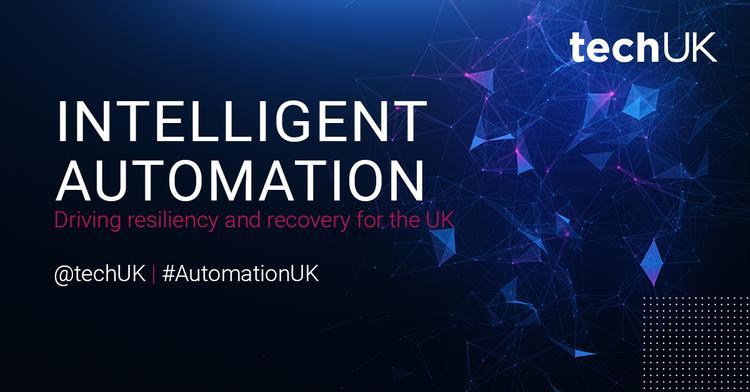5 Steps to Intelligent Automation in Financial Services Customer Interactions

This article is based on a recent event I participated in for techUK, Intelligent Automation: Transforming Operations and Customers Interactions in Financial Services, and brings together many years of experience in customer experience consulting and technology solutions.
It will look at what intelligent automation is, why it’s important, and crucially five steps to help you on your way.
So, what is intelligent automation in customer experience?
CX automation is any technology that helps customers with simple or common tasks to improve customer interactions or processes. Streamlining CX touchpoints, like telephony, social media or emails and admin tasks such as booking a repair or uploading signed documents to a customer record.
It will help you to reduce operational costs, increase self-serve and improve customer experience overall. Which for banks and building societies, having experienced a fall of 1 point in the UKCSI rankings between January 2021 and 2020, will be a top priority.
Customers ultimately want great experiences, effortless interactions and problems solved quickly. As with any automation, it streamlines processes, improves efficiencies and boosts business performance, but only when it’s done well and in a way that engages customers in the journey can it really be ‘intelligent’.
Let’s take a look at how you can practically approach intelligent automation in financial services customer interactions…
Step 1: Get (the right) feedback
It sounds obvious, but until you know what the customer experience is truly like, how can you improve it? Customer feedback is often a given for many businesses and already part of an existing CX strategy. But are you asking the right questions? For us, it’s about understanding how easy the customer found the contact experience, how quickly was their query resolved?
Make sure your customer feedback isn’t just automated, but that it asks the right questions, to help you see where other elements of automation and customer interactions are working or not working. Finally, make sure you identify manual processes that are suitable for automation.
Step 2: Calculate the benefits
The benefits of adding more automation to a customer experience programme are well-documented and we’d always recommend running a bespoke calculation (using a tool such as our CX savings calculator) to see how much your traditional telephone based contact programme is costing. Industry averages state it costs around £4 per contact for telephony Vs 30p for self-serve (more on self-serve in Step 5).
Until you know your current costs, you can’t calculate the benefits of automating, and until you do that you can’t begin to consider intelligent automation.
Step 3: Invest in (the right) CX technology
We know that technology has a crucial role in any customer experience strategy, but that tech now has to enable you to automate CX processes intelligently; technology such as customer feedback software, visual IVR, omni-channel customer communications and quality monitoring and compliance dashboards, telling you everything that’s going on across every single phone call.
Step 4: Connect customer journeys
I’ve spoken at length in the past about bridging the gap between digital and telephony channels, and this is exactly what we mean here by connecting customer journeys. There’s nothing more frustrating for a customer to have entered in all of their security details via the IVR only to be asked to repeat this by the contact agent! Use technology to automate the journey and ensure the information travels from one platform to another. Tools such as dynamic FAQs are a perfect example to enabling this. Connecting your journeys to live support when needed also gives comfort to customers and increases the acceptance of automated journeys. For the organisation, it reduces the frequency and handling time of ‘failure demand’ contacts, providing further savings from reduced average handling time.
Step 5: Focus on engaging customers through self-serve journeys
Finally, use automation to improve existing self-serve processes. This isn’t necessarily about investing in new super advanced technology but can be as simple as redesigning the processes and rules within your existing technology. For one financial services business we re-engineered their existing IVR natural language rules engine and designed and recorded a new on-brand audio persona. By making the journey more straight forward, it generated huge results including an uplift in c-sat ratings and self-serve rates, plus hundreds of thousands in cost-savings by redeploying FTEs to other customer facing work. You can read more on this case study here.
Conclusion
We hope this has provided some helpful thoughts. Intelligent automation really is the way forward for financial services customer experience and following these 5 steps will help you get there in a way that works for you and your customers – taking existing automation to the next level, through really understanding customer pain points and responding to those appropriately and intelligently.
To find out more about intelligent automation in CX, visit customertouchpoint.co.uk, email [email protected] or phone 03300 200 444.
Or keep your eyes peeled on techUK Insights for more intelligent automation content coming up…
By Rick Kirkham, Founder & Managing Director of Customer Touch Point
You can read all insights from techUK's Intelligent Automation Week here








